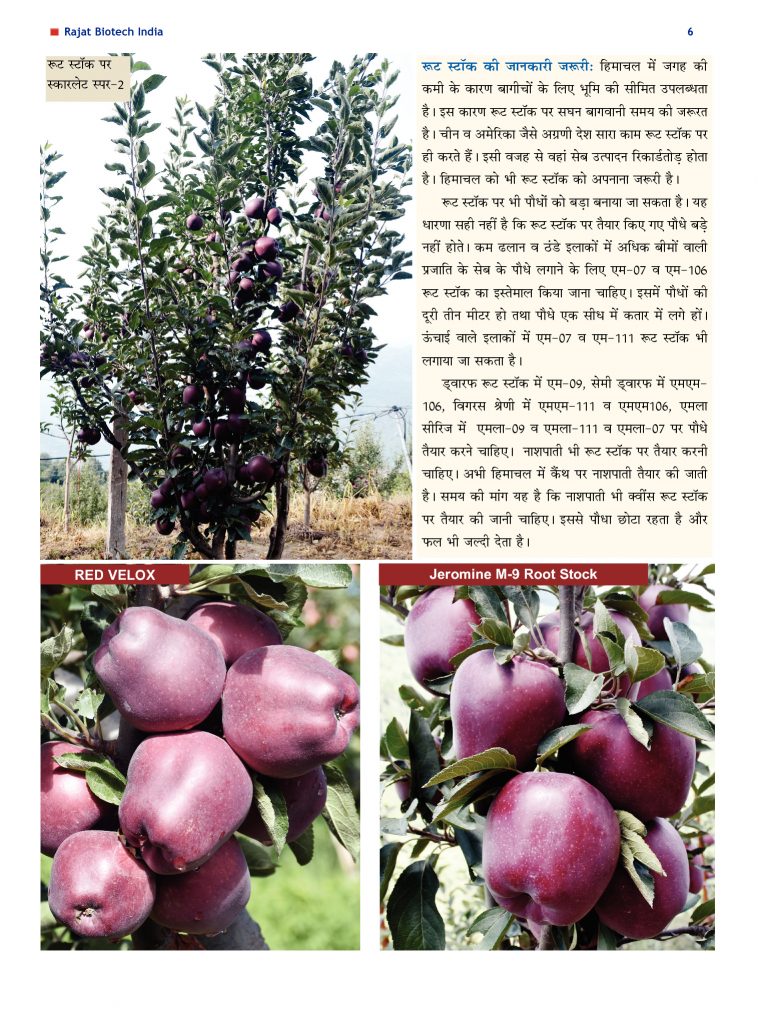What is the Root stock?
A Rootstock is a plant, which already has an established,
healthy root system, used for grafting a cutting or budding from another plant.
The part being grafted onto the rootstock is usually called the scion.
Apple Rootstocks: Apple tree rootstocks are referred to by
numbers prefixed by letters indicating the developer of the Rootstock.
M: Designates mailing series developed stocks. East mailing
research Station in Kent, England collected clones of the Paradise stocks from France
in 1912 from which 24 M were designed with no particular order to the Rootstock
characteristics other than where assigned. In other words M.2 is larger tree
than M.9 while M.27 is smaller than M.26.
MM: Designates mailing-Merton stocks developed from joint
breeding program by john Innes institute, in Merton, England & East Mailing
research Station in the early 1950s. The MM series was developed primarily to
provide resistance to Wooly Apple Aphid (Eriosomatinee) Infestation.
EMLA: Designates East Mailing/long Ashton Research Station
Which Took the M stocks and developed virus free versions. E.g., EMLA 7 is M 7
with a guaranteed virus free stock. EMLA characteristics are often different
from the parent M rootstock. Note Thatnealy all the apple rootstocks in the
industry are now virus free.
CG or G: Designates Cornel-Geneva stocks which are developed
via the Cornell & USDA collaboration at the New york agricultural
Experiment station in Geneva, NY. The G is the old designation. All Newer
stocks are CG followed by numbers that actually provide some information about
the stock. As one might surmise, this is huge improvement in the classical
naming scheme which has no identification method at all.
M.9: It is also very dwarfing rootstock. Reaches a height of
8 to 10ft (2.4 to 3.0m) It grows under average soil conditions, but needs a
good rich soil to thrive. A good choice where space is limited and fertility is
high. Permanent staking is required, as it routine feeding and watering. Trees on
this rootstock always require leader support. The Rootstock is very susceptible
to fire blight and can develop burr knots.
M.26 Dwarfing: Similar to M9 in Effect, although somewhat
more vigorous and generally stronger, with a height of 8 to 10 ft (2.4 to 3.0m).
A good choice where soil quality is average and compact growth is required.
Comes into fruit after 3-4 years, reaching full cropping capacity after 5 to 6
years. It is susceptible to coolar rot and fire blight and should not be planed
in a wet site.
M.7 Malling 7 Rootstock: It Produces a semi-dwraf tree of
class 6 that is freestanding in deep well drained soils. The rootstock may
profusely and is susceptible to collar rot.
MM. 106: It is semi Dwarfing sometimes referred to as semi
vigorous. This is the most widely used of rootstocks. Trees on MM. 106 are
highly susceptible to collar rot especially when planted in soil that remains
wet (Poor) .
Source:- Apple Plants India




Comments
Post a Comment